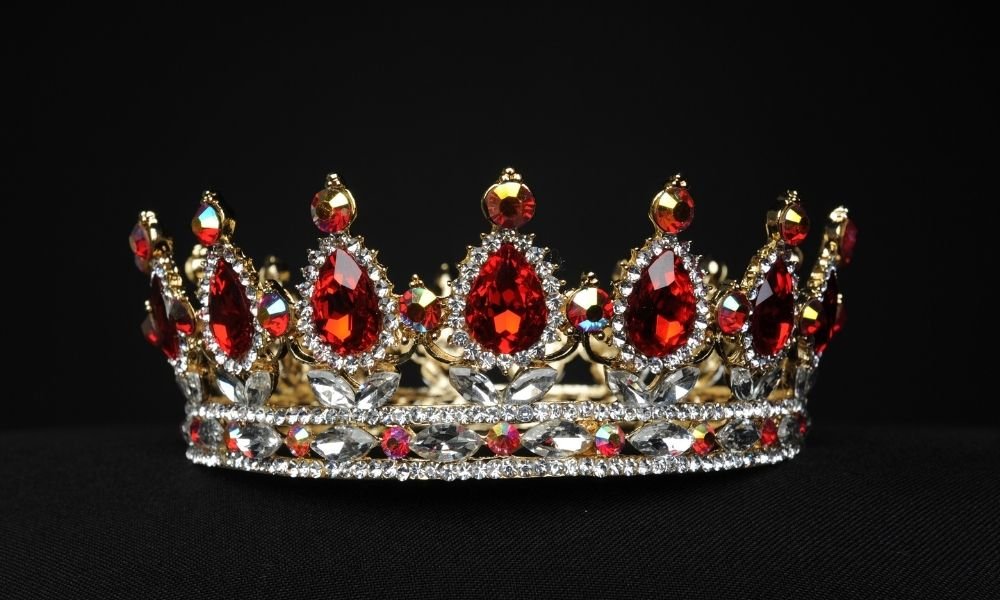Gems are fascinating for so many reasons. Some people are dazzled by their natural beauty, while others sense healing energies emanating from them. Many scholars research the most famous gemstones in history for more insights into our past. The best part is that so many of them are still on display today.
The Koh-i-Noor Diamond
When a diamond is 186 carats, it tends to forcibly change hands quite a bit. The Koh-i-Noor, which means “Mountain of Light,” existed mainly as a spoil of war between 1100 and 1850. That’s when it wound up in England in the possession of Queen Victoria. It seems as though she owned every epic jewel at one point, and the world’s pillagers didn’t dare challenge her. The Koh-i-Noor reportedly arrived with a written curse that said, “He who owns this diamond will own the world, but will also know all its misfortunes. Only God or Woman can wear it with impunity.” Sure enough, the gem has been worn only in the crown of queens: Queen Alexandra, Queen Mary, Queen Elizabeth, and the Queen Mother.
The Timur Ruby
England’s Crown Jewels are spectacular across the board, but at least one has been proven to be a kind of imposter. The 361-carat, unfaceted stone was discovered in 1612 and named after the founder of the Timurid Empire. The names of several royal owners are inscribed on the surface. In the 1840s, during Britain’s annexation of India, the ruby was presented to Queen Victoria. But in 1851, gemologists ruled that it wasn’t actually a ruby—it was a spinel. Rubies and spinels look nearly identical, and have similar chemical makeups and hardness. But the monarchy didn’t mind, and the “ruby” remains as the center stone of a diamond necklace.
The Stuart Sapphire
This whopping, 104-carat oval-cut sapphire is rumored to have belonged to the first king of Scotland, Alexander II. It was passed down through various royals, eventually coming into the possession of King George III of England. When his granddaughter, Queen Victoria, was coronated in 1837, the sapphire was at the front and center of the crown. But the sapphire’s undisputed reign ended in 1909, when it had to move to the back of the crown to make way for the Cullinan II diamond.
The Star of India Sapphire
Gem enthusiast J.P. Morgan wanted to show off an impressive collection at the Paris Exposition of 1900. That’s where the world first caught a glimpse of the golf-ball-sized, 563-carat star sapphire that’s around two billion years old. It was donated to the American Museum of Natural History and protected by an alarm. But one night in 1964, thieves happened to break in when the alarm’s battery was dead. They made away with more than $400,000 in gems, but were arrested within days. One member of the crew bargained for a lighter sentence by telling the authorities where they could find the loot—in a Miami bus terminal locker.
Halley’s Comet Opal
According to the Guinness Book of World Records, the largest uncut black opal was found while Halley’s Comet passed overhead. Five Australian miners found it in 1986 at a popular site called Lunatic Hill in New South Wales, Australia. Opals loom large in Aboriginal mythology. The story goes that the Creator descended to earth on a rainbow to share a message of peace. When his foot touched the ground, the stones turned to opals, and started sparkling with every color imaginable.
The Black Orlov Diamond
The origins of the Black Orlov are murky. It’s said that a monk stole it from the eye of a Brahma statue in India, thus cursing the gem forever. Maybe, maybe not. It certainly has not been associated with good luck. In 1932, a dealer bought the dark gray, 67.5-carat stone and soon thereafter, jumped from a New York City skyscraper. Russian princess Leonilla Bariatinskaia obtained the gem, but fell to her death from a building in Rome in 1947. The diamond passed to another Russian princess, Nadia Vyegin-Orlov—who also later fell to her death from a building in Rome.
The Dom Pedro Aquamarine
Brazil is home to an enormous array of sparkling native gems, particularly amethysts. But one of its aquamarines broke global records for its size. In the Minas Gerais mining region at Pedra Azul, three independent prospectors uncovered the enormous gem in the late 1980s. It was almost three feet long and 100 pounds. Unfortunately, they dropped it and it split into three pieces. Rather than carve up the largest chunk into smaller jewels, a German gem cutter spent six months crafting it into a breathtaking obelisk that looks like it’s glowing from within. It was named Dom Pedro after the first two emperors of Brazil and donated to the Smithsonian.
The Taylor-Burton Diamond
Richard Burton could have saved himself quite a lot of money if he hadn’t insulted wife Elizabeth Taylor by telling her she had masculine hands. Incensed, she insisted that he get her a consolation prize that would take the focus off her hands. So, at an auction, Burton splurged on this flawless, 70-carat diamond for $1.1 million, and spent another $80,000 on its setting. Taylor wore it to the Academy Awards and to Princess Grace of Monaco’s 40th birthday party. But after divorcing Burton (the second time), she sold the jewel. Perhaps no one in the world loved gems as much as Elizabeth Taylor, or wore them so well. But she always insisted that no one could ever truly own them; they just served as guardians of the jewels for a little while.
The most famous gemstones in history captured hearts and imaginations because they’re such extreme examples of the beauty that can come from the earth. Most of us probably wouldn’t wage war to own a legendary stone, but we don’t have to. You can have glorious gemstones in your home to enjoy, no matter what your style or budget. You can form a connection with a Brazilian amethyst for sale that’s more incredible than a sculpture, or buy a tree decorated with a rainbow of gemstones. Shop Brazil Gems’ website to find your own family heirloom, and make it part of your story.


